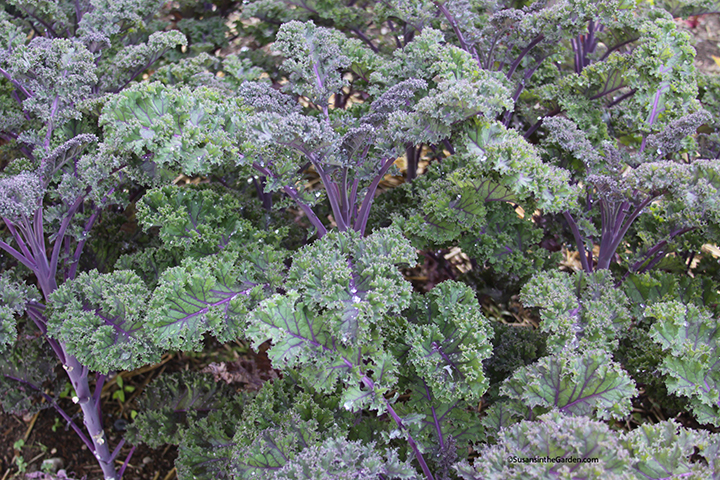How to Grow Kale

I grow kale primarily because it’s so healthy to eat, but it’s also a beautiful plant. There are so many amazing varieties, with curled or smooth leaves.
Latin Name: Brassica oleracea var. acephala
Plant Family: Brassica (Brassicaceae)
Cool-season crop
Did You Know?
In the past decade or so, kale has become the darling of the health food world. It’s considered to be the solution to preventing many ailments. You’ve probably heard of kale smoothies, kale chips and adding kale to practically every dish, right? Yet many folks find kale unpalatable and, because of this, they have a hard time jumping on the bandwagon. To be honest, I haven’t always liked kale. But once I learned about parboiling the leaves prior to preparing them for a meal, I became a convert. (read how to do this below)
Plant Seeds or Seedlings? Direct-sow seeds in the garden, or start seeds indoors 1 month prior to planting them outdoors.
When: In early spring as soon as the soil can be worked, and again in mid- to late summer for a second crop, if desired. I’ve actually grown ‘Red Russian’ kale through the winter months in our little unheated hoop house.
Days to Germination: 10 to 20 days
Depth to Sow: 1/4 inch
Spacing: Sow seeds 6 inches apart, eventually thinning the plants to a spacing of 12 to 18 inches. This will depend on the cultivar so refer to seed packet or plant tag instructions.
Days to maturity: 48
Cultural Information:
Prepare bed. Plant seeds or seedlings at the above spacing. If aphids or cabbage worms are a problem in your area, immediately cover the bed with floating row cover or agricultural insect netting. This creates a physical barrier over the plants. Feed seedlings with an organic nitrogen fertilizer such as fish emulsion. Water bed regularly. The flavor and color of kale leaves will be intensified by exposure to frost.
Susan’s Picks: ‘Darkibor’*, ‘Dazzling Blue’, ‘Lacinato’ (a.k.a. “dinosaur kale”), ‘Redbor’*, ‘Red Russian’, ‘Vates’* (varieties marked with an asterisk are very cold-tolerant)
Potential Insect Problems: Aphids, cabbage worms, slugs, pillbugs
When to Harvest:
Pick individual leaves at any size rather than a whole plant at a time. That way, you can extend the harvest period.
How to Cook & Preserve
Parboiling kale leaves makes them easier to digest. Remove the central stalk from each leaf. Cook the remaining tender parts of the leaves in boiling water for 5 minutes; drain. Saute butter and a minced garlic clove in a skillet, stir in the parboiled leaves. They’ll be flavored with the essence of garlic. Add a splash of sesame oil and serve. They are absolutely delicious this way! To freeze leaves for later use, remove the central stems, blanch the remaining leaves in boiling water for 2 minutes. Then plunge the leaves into ice-cold water, drain, and pack into freezer bags.
My Videos About Growing Kale:
- Vegetable Harvesting Tips
- Grow Cabbage Family Crops
- Organic Insect Control: Aphids, Cabbage Worms & Leafminers
- Organic Insect Control: Flea Beetles, Hornworms, Slugs & Snails
Back to Vegetable Grow Guide Chart
Copyright: Susan Mulvihill, Susan’s in the Garden, SusansintheGarden.com

